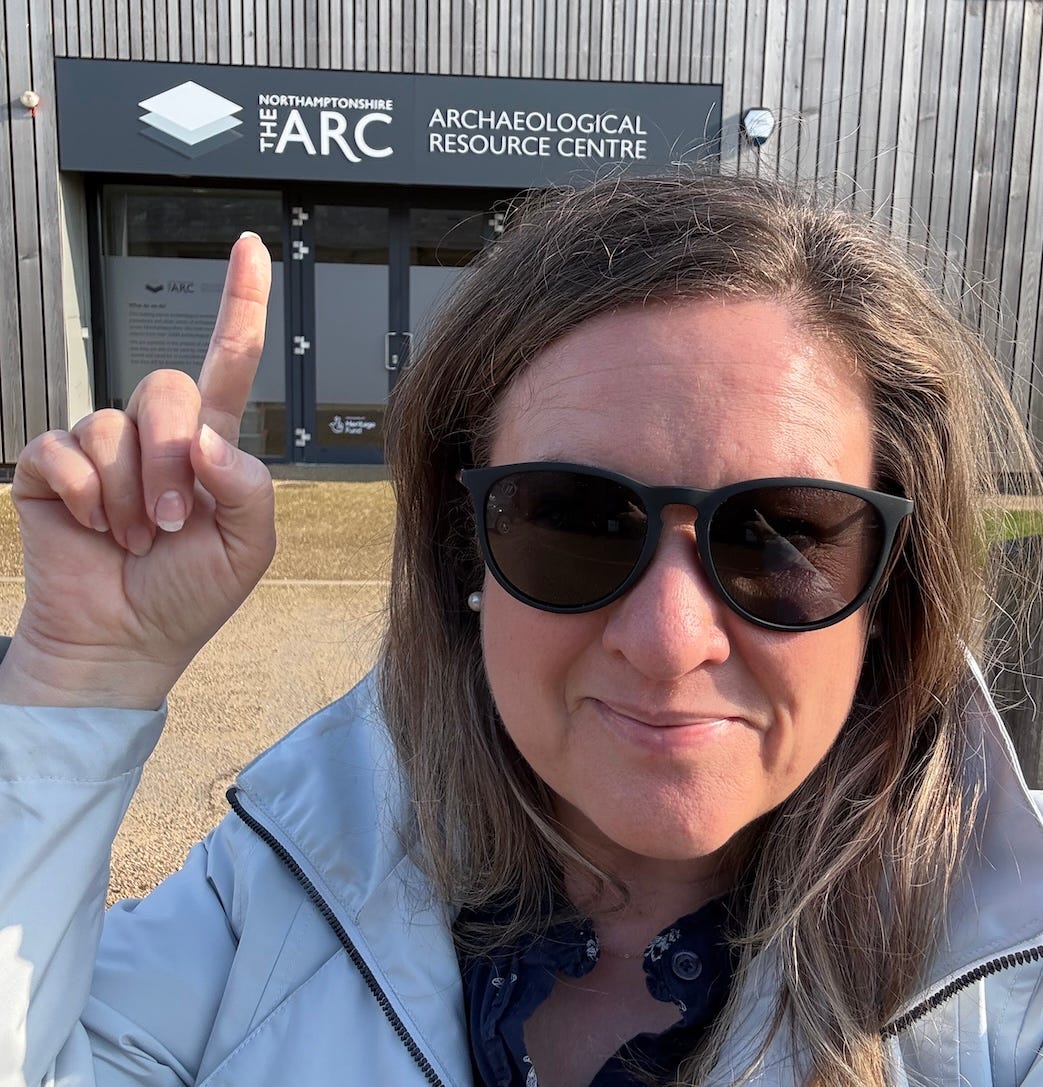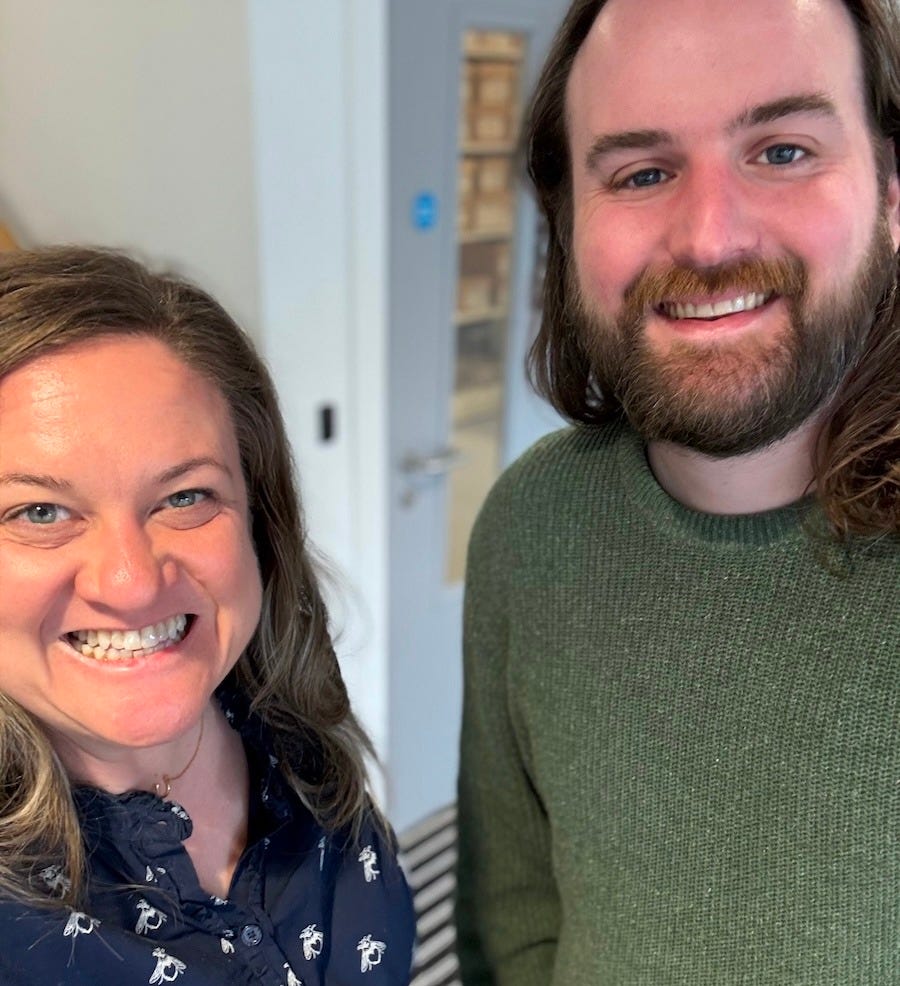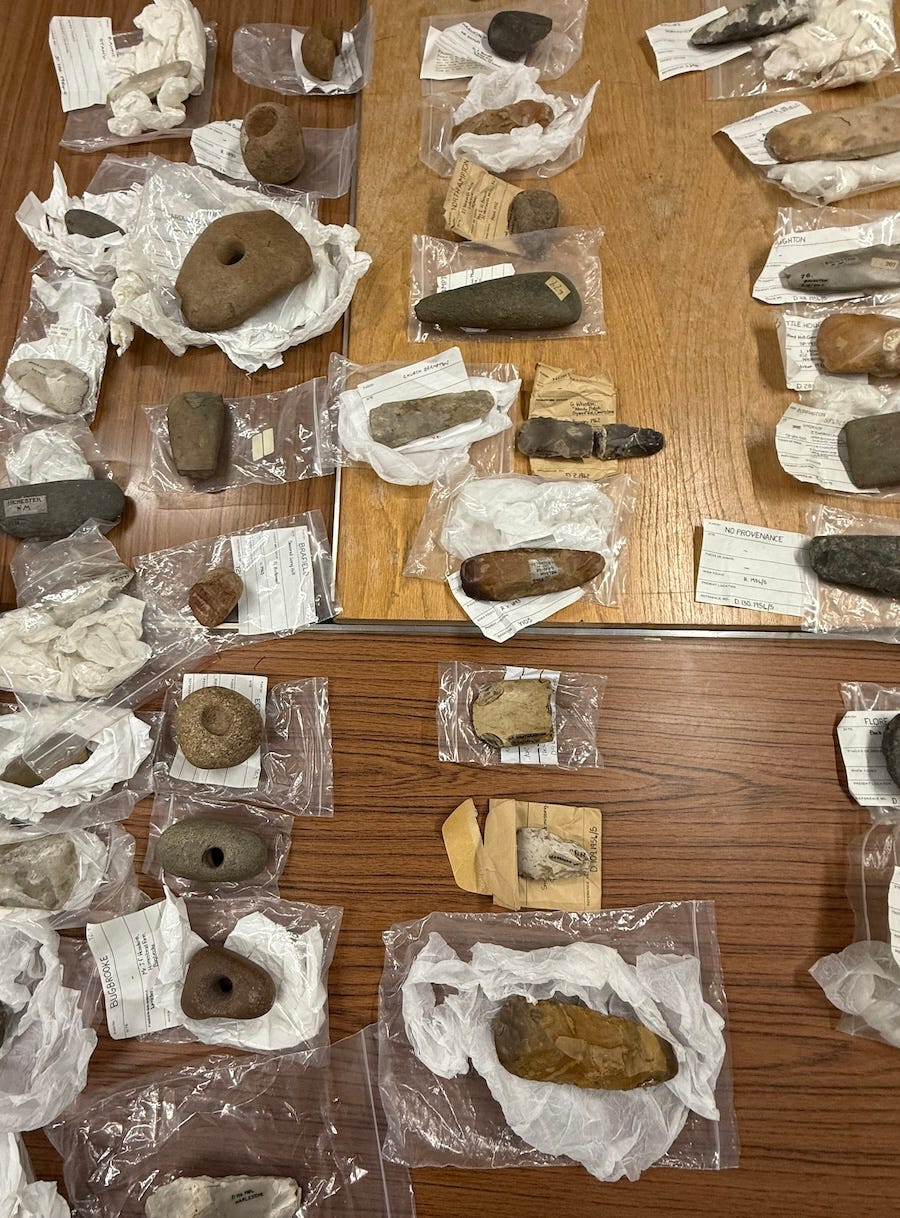I recently returned from a 10-day research trip to the UK, where I was gathering material for three upcoming novels. In both my work as a historical romance author and a technical communicator, my job is the same: explaining complicated things to people and getting people to care about complicated things. Whether you’re an engineer, a history lover, a romance reader, or some glorious combination of all three, this series is for you.
In an archaeological storehouse and a dockside museum, I realized something simple and surprising: our tools may be what outlasts us all.
“Please don’t take pictures of human remains.”
And thus began my archeology research in England.
One of the reasons I went to England was to learn more about archaeology in Northamptonshire for one of the novels I was there researching. I was beyond excited when I had the chance to visit the Northamptonshire Archaeological Resource Centre, or ARC, perched on a sloping hill of the Chester House Estate. It’s just miles from the site of a fictional dig featured in my manuscript.
The ARC is where the county’s archeological finds go after being discovered during anything from a planned archaeological dig or a road improvement. I met with Ben Donnelly-Symes. As the archeological archives curator, Ben basically knows everything there is to know about archeology in Northamptonshire.
Ben led me into the heart of the ARC, which looks strikingly similar to the geological core warehouse I used to explore when I worked in communications for an engineering and geology college. But instead of core samples, which give geologists snapshots of eons, these boxes contained evidence of humanity frozen in time.
As we talked through a list of research questions for my book, something unexpected caught my eye: a folding table covered in Neolithic axes.
Yes…there was a table of Neolithic axes.
Stone Tools
“Someone asked how many we had, so we decided to pull them all out,” Ben said as casually as if he’d been inventorying the teaspoons.
And that’s the story of how I once spent several minutes gaping at a folding table covered in 10,000-year-old stone Neolithic axe heads. Some were blunt, used for hammering. Others came to a pointed V that would need only the slightest sharpening to be deadly once more.
“We can view them with a microscope to see the strike patterns,” Ben explained.
I lit up. “I’ve seen it on an SEM microscope!” Although the geologists and engineers I worked with were usually looking at shale, not Neolithic axes.
When I first reached out to Ben asking (begging) for a chance to visit him at the ARC, I mentioned my years in science academia and my current company where I create compelling communications for STEM companies. What I hoped he heard was: I’ll tend your facts, your knowledge, and your expertise with care.
We went on through the ARC visiting Roman and Anglo Saxon pottery that bore marks of craftsmanship and unintentional fingerprints. Everything was incredibly fragile: the clay pots and vases, the bones. Even the rusting Anglo Saxon sword was being consumed daily by oxidization.
Those axes, though? Still sturdy. Still sound. Still tools ready for use.
Iron Hooks
It made me think back to visiting the London Museum Docklands several days earlier. Located in a historic 19th-century warehouse, the museum holds evidence of the city’s shipping trade dating back to the Romans.
There are some very cool artifacts, compelling and heartbreaking displays…even a mummified cat.

For some reason, it was the Docker’s Hooks that called to me.
Cast iron and hand held, each hook was shaped for a specific purpose.
The double bag hook grabbed rough sacks of coffee or grain.
The drum hook helped dock workers grip drums and barrels.
The paper hook slid into the center of giant rolls of paper.
The iron doublesack hook grabbed great bales of wool.
These cast iron tools were meant to take a beating. Meant to last. They’ve endured long past the coffee that was consumed, the ale that was gulped, the newspaper was read, or the wool was worn.
I started to see tools everywhere I went in England. Tools built for purpose and persistence. Even at the historic breweries I visited, many of the Victorian tools are still sound and still superior to their modern counterparts.
If we want to build things that last, the tools we use to build them need to be stronger than the things we’re making, and even more resilient.
Today’s Tools
They’ll remember us by so many things, but maybe what will last the longest are our tools – those things meant to take a beating. Meant to endure.
I’ve spent my career around tools. I’ve donned safety goggles and hard hats. I once even had to ask the governor to wear close-toed shoes. The tools I’ve seen and written about are not Neolithic axes, but the modern kind. Tools that:
harness low-temperature geothermal wells to produce cleaner energy
help babies with cerebral palsy develop strength and mobility
make medical imaging safer
use cancer-fighting nanoparticles to target diseased cells
that may someday analyze the brine found on a distant planet
Even the tools of my trade – language, metaphor, frameworks, storytelling – are built for precision and durability. Whether I’m writing about the past or explaining the future, I don’t build objects, but understanding. Like a Neolithic hunter, I’ve spent years honing skills and intuition. Only I don’t hunt bison. Rather, I shape narratives out of disparate, complicated, seemingly unrelated facts. But that hunter and I, we’re nothing without our tools.
We leave our mark through what we make, yes. But we also leave it through what we use. And perhaps, in the end, only the tools will remain.
So what are your tools? How do you keep them sharp? How do they help you build things to last?








